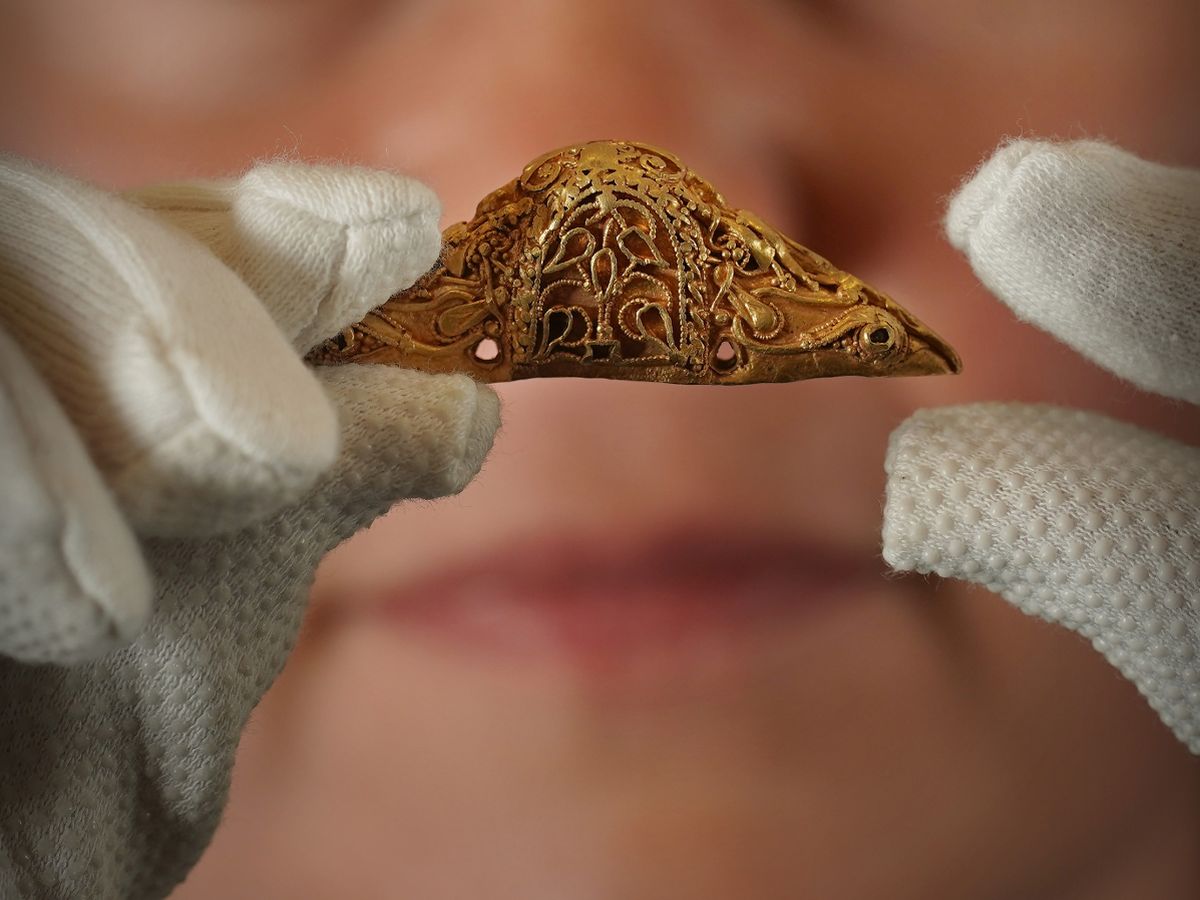A one-of-a-kind golden sword pommel was discovered by a metal detectorist in Scotland in 2019. Depicting a rare mix of Christian symbols with mythological creatures, the treasure has just been valued at $34,500.

The golden sword pommel was discovered by a metal detectorist near Blair Drummond, a small rural village located about five miles northwest of Stirling in central Scotland. Dated to the early medieval period and described as “exceptionally rare,” the finder has handed the treasure over to Scotland’s national museums.
Showing classic Christian iconography blended with two unidentified creatures, the rare golden pommel has just been valued at $34,500.

Discovered in 2019, but put on hold until after the pandemic lockdowns, this treasure measures 5.5 centimeters (2.1 inches) wide and weighs 25 grams (.88 oz). It is estimated the solid-gold sword pommel was created sometime around 700 AD. A pommel (Anglo-Norman for “little apple”) is an enlarged fitting at the top of a sword handle that prevents a sword from slipping from the hand. Furthermore, adding a pommel allowed sword designers and wielders to fine tune the balance of a sword.
The Scottish Archaeological Finds Allocation Panel (SAFAP), better known as the Scottish Treasure Trove , meets three times a year to appraise new finds. This panel decides which museum discovered objects are allocated to, by considering the cases made by each applicant museum. The Crown has a right to the Scottish Treasure Trove, which is determined by The Kings and Lord Treasurer’s Remembrancer (KLTR), the British Crown’s representative in Scotland.
According to a BBC report, in this instance, the Kings and Lord Treasurer’s Remembrancer allocated the find to National Museums Scotland. The Scotsman reported that John Logue, King’s and Lord Treasurer’s Remembrancer, said: “This discovery highlights the positive work done by the Treasure Trove Unit to decide upon the preservation of rare items for the nation.” Being such a unique find, the Museums of Scotland have valued the artifact at £30,000 ($34,429).

A Most Amazing Creative Fusion
Dr. Alice Blackwell is the senior curator of medieval archaeology and history at NMS. Blackwell describes the object as “decorated in gold filigree,” and she added that nothing like this has ever been found before in the UK. She said the artifact is “a bit of a cultural, artistic melting pot ,” and it is still unclear who the golden pommel belonged to around 1,300 years ago.
Blackwell said at the time the piece was crafted, Britain was experiencing “a most amazing creative fusion where different types of styles and art and techniques for making things were all melted together to make something new.” The gold pommel is similar to Anglo-Saxon art , and it fits the “ insular art style ,” also known as Hiberno-Saxon art. This name derives from insula, the Latin term for ‘island;’ this artistic format was produced in Britain during the post-Roman era . Perhaps the style is best known for its use in the Lindisfarne Gospels and other illuminated manuscripts .
Climbing the Tree Of Life to Resurrection
Bulging eyes and a beak point outward from the center of the pommel, and the sides of the object feature stylized panels. One panel depicts a geometrical cross, and the other shows a tree. It is thought that the eyes and beak represent the head of a bird of prey, which symbolizes protection. The cross represents the crucifixion event, and the tree is most likely the Tree of Life , which again holds themes of resurrection and the attainment of eternal life.
The overall detailing indicated this artifact was designed for a Christian warrior who had chosen birds of prey as protective motifs surrounding the cross and the Tree of Life. But the imagery is not wholly Christian, as two mythological beasts are seen on the two sides of the pommel. This fusion of Christian and pagan imagery is why the item is described as being “so visually rich which sets it apart from anything else that’s been found in the UK.”





